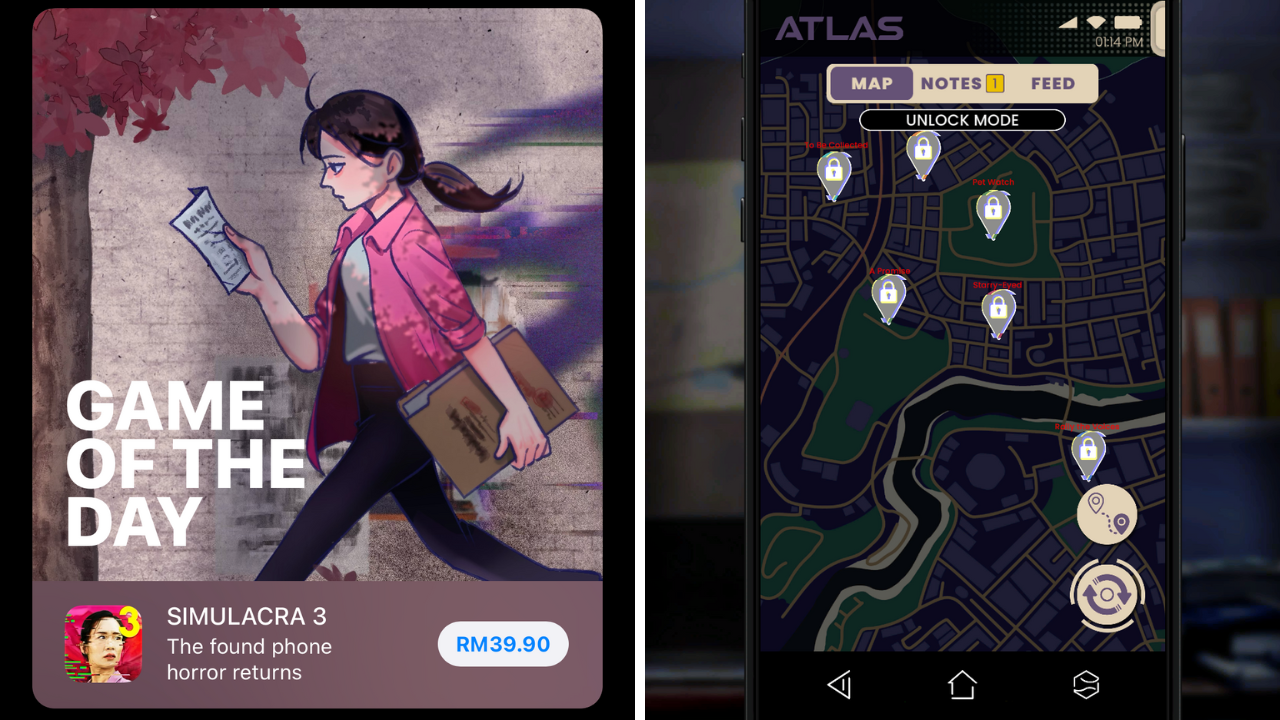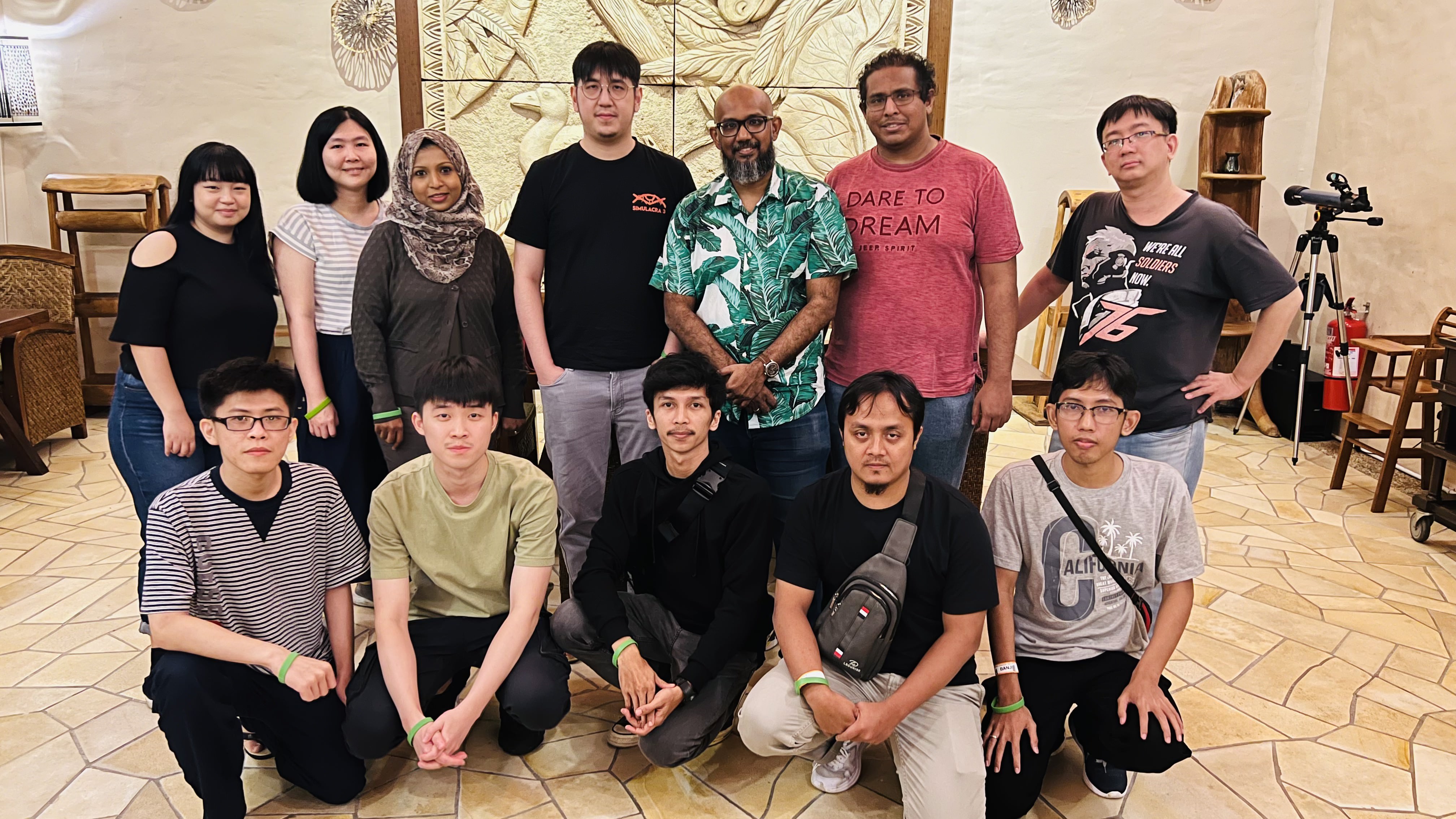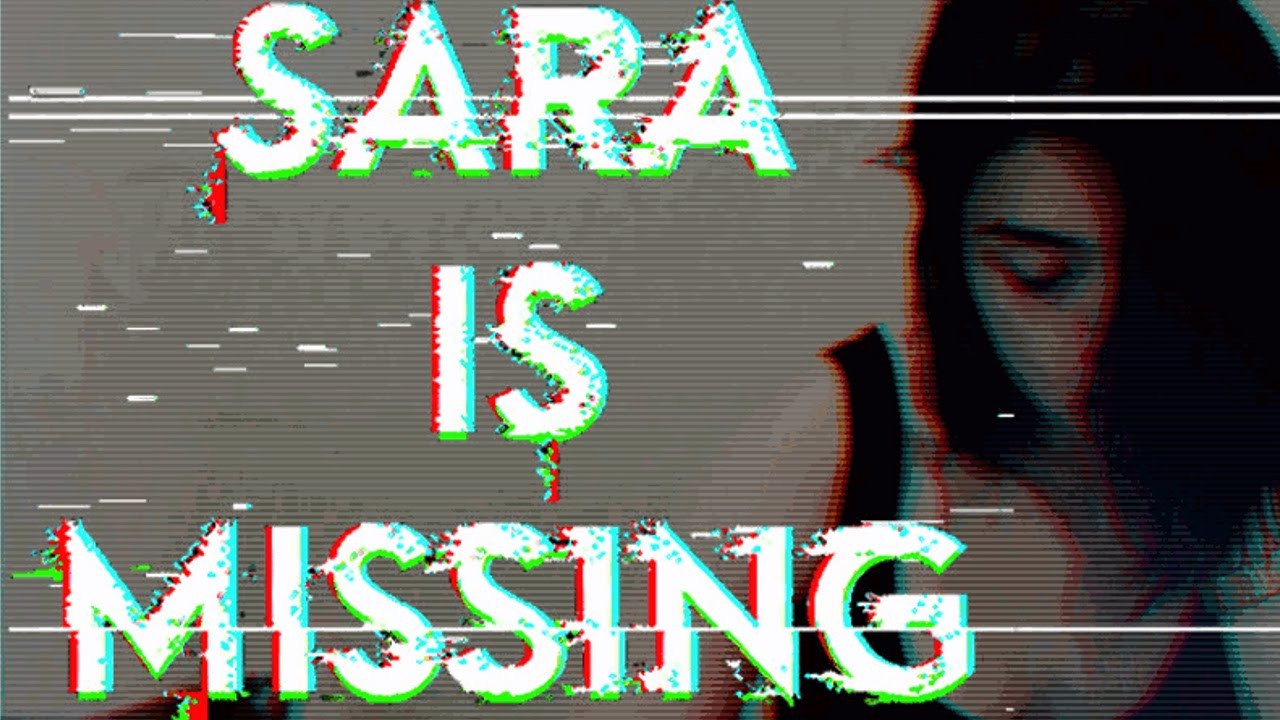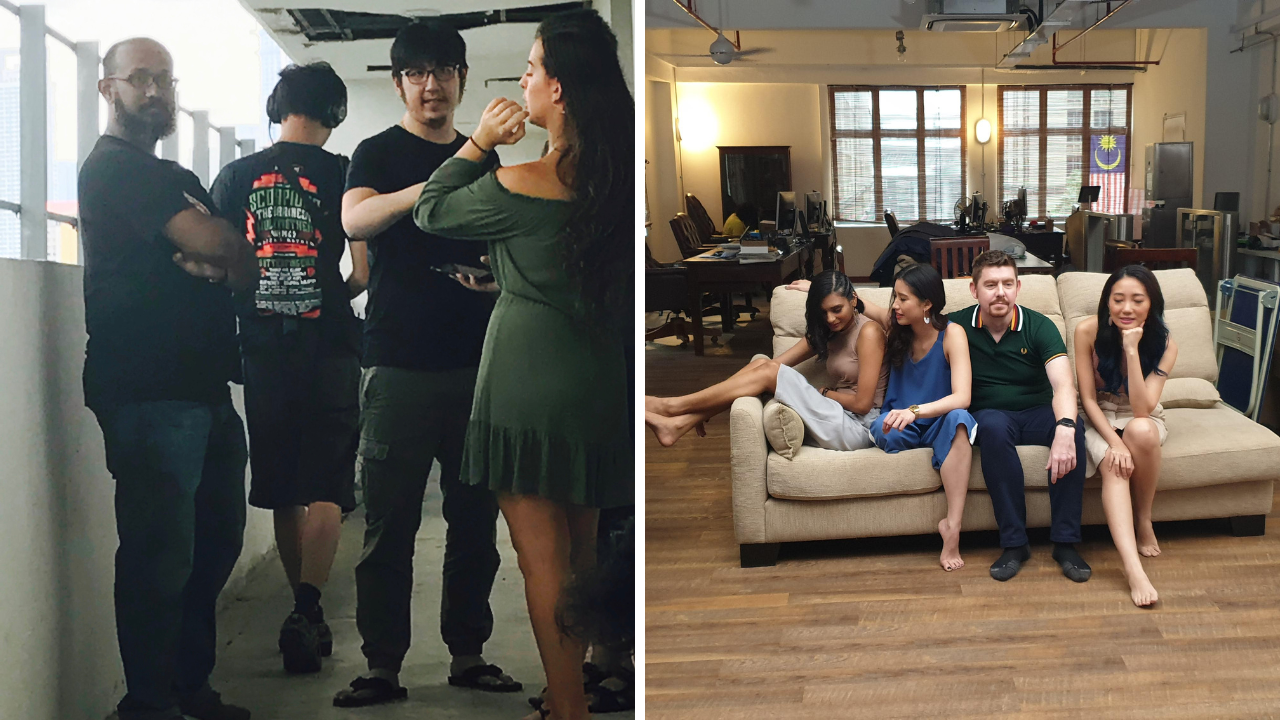We first spotlighted Kaigan Games in another article that featured Malaysian-made mobiles games being highlighted on the Apple App Store.

Their third game, Simulacra 3 was featured as the Game of the Day on the App Store, a significant push from the makers of the most significant mobile phone in the market, the iPhone.
To find out more about the makers of the game, we were connected with the founders of Kaigan Games, brothers Sharhrizar and Shahazmi, and Jeremy Ooi. We spoke to them about the founding of Kaigan Games, how they paid for the development of their first game out of pocket, and how they found such viral success with prominent YouTubers like Markiplier playing their games.
How did Kaigan Games start?
 Pictured: Second from the top right, founders Shahazmi, Shahrizar, and Jeremy
Pictured: Second from the top right, founders Shahazmi, Shahrizar, and Jeremy
Kaigan Games was founded in 2016 by the aforementioned brothers Shahrizar and Shahazmi and Jeremy Ooi. Ironically, none of them pursued degrees related to gaming as both Shahazmi and Jeremy pursued accounting while Shahrizar studied physics.
In the beginning, the brothers made games together, Shahrizar learned how to create art for games by self-learning tools like Blender and Photoshop while Shahazmi learned to code.
They managed to make about 20 games at the time on their own, getting contracts with the likes of Axiata for a badminton game. Shahrizar revealed that the mobile gaming landscape was in its infancy at the time and they couldn’t even get money into Malaysia when they sold their apps. They had to open a bank account in Japan just to receive income from the sales of their apps.
Meanwhile, Jeremy who dropped out of accounting found his calling in production as a production assistant in the theater. He revealed that he wanted to be in game development and bought books on game design, got himself into many development blogs and eventually landed a job at a now shuttered gaming studio, E1 Studio, as a producer.
The trio met each during those years of hustling and connected. In Shahrizar’s words “We just wanted to do something that we can call our own.” They thought about what they could do with an artist, a writer with a theater background, and a coder and landed on the concept for their first game, Sara is Missing.
The Making of Sara is Missing

Kaigan Games’ bread and butter, the “found phone” horror concept was chosen as horror was the in thing at the time and YouTubers like Pewdiepie were massively popular for reacting to horror games.
The found phone concept was inspired by two games that caught the eyes of the trio: Replica (a phone simulator game) and Her Story (which used a live actor and a simulated computer desktop).
The coding-guru of the group Shahazmi developed the prototype for the found phone format and prototyped the robust dialogue system and the ability to play videos in the game efficiently which became the foundation of the game (and all future games in the series).
With the concept they were able to keep costs low—live actors meant fewer animations and a phone simulator meant minimal art assets.
Sara Is Missing was completely self-funded and they hired actors, an artist, and writers (who doubled as the film crew) and in Shahrizar’s words “Let’s burn that money for the next 6 months, let’s do something cool, we have this opportunity.”

It took about 6 months to finish Sara Is Missing and it got 2 million downloads in its first three months. The game also won 2 awards at the International Mobile Gaming Awards Southeast Asia in 2016. We asked if it was a financial success, at which, they laughed.
“It made zero money,” said Shahrizar. “But it opened a lot of opportunities for us,” continued Jeremy.
Jeremy shared that it was tough to pitch the game without a product as people didn’t believe that there was a market for a phone simulator or story games on mobile phones (compared to casual games like Flappy Bird).
Shahrizar said that Sara Is Missing was always structured to be a minimum viable product (MVP) to test the market and get feedback. So even if the game didn’t make any money, it helped them to pitch for investment and the game provided valuable feedback.
He also shared an amusing feedback that he got where people would turn on Sara Is Missing and think that their phones were being hacked. The phone simulator was doing too good a job in this case.
Making of the Simulacra franchise

With the success of Sara Is Missing the team were able to score funding from Cradle Fund an early stage start-up funding agency under the Ministry of Finance in Malaysia.
Cradle Fund also famously funded businesses like unicorn Grab, women’s wear brand Christy Ng, and POS provider Store Hub (who also own food delivery platform Beep).
We asked why their next game wasn’t Sara Is Missing Too (or 2 Sara 2 Missing) but the question kind of answers itself.
“We wanted a product that creates the same experience but is open for future opportunities like sequels,” he said. “We couldn’t have different people named Sara go missing every single time.”
As Sara Is Missing was always meant to be an MVP, the Simulacra franchise became the realisation of the founders’ original vision. The spiritual successor followed much of the same blueprint of its progenitor.
 Pictured: L - Shahrizar and Jeremy on the set of Simulacra 1 | R - the cast of Simulacra 2 rests in between takes (yes, that's local legend Chelsia Ng)
Pictured: L - Shahrizar and Jeremy on the set of Simulacra 1 | R - the cast of Simulacra 2 rests in between takes (yes, that's local legend Chelsia Ng)
The first Simulacra took more than one year to create and everything was still done in house by Kaigan Games (save for filming). Though written and filmed in Malaysia, the developers were very conscious about making sure it appealed to an international audience.
In terms of scale, they didn’t want to just go bigger with each series by making each game longer but settled on different gimmicks instead for each game, i.e, online dating horror, social media horror, and small town horror (like Twin Peaks) for 1, 2, and 3 respectively.
“It’s literally like making movies, we sit for 6 months just talking about the story, every day meeting Jeremy and the writing team to iron out what’s the story, what’s the character, what’s the motivation?” shared Shahrizar.
He said that this kind of development cycle is unique to the Simulacra franchise as usually developers would have the core mechanics and core gameplay loop done first before the story comes in. For example, the jump mechanics in Super Mario Bros or the catapult and destruction mechanics in Angry Birds.
The team plans for their games to release around Halloween each year to ride on the hype of the spooky season and to get featured easier on store fronts like the App Store.
Shahrizar confessed that the App Store was the more friendly of the game storefronts and helped them push their games. Simulacra 3 even got a complete feature write-up for the App Store from the curation team.
We asked how they got their games in the hands of prominent YouTubers like Markiplier and Jeremy very candidly shared that they had zero marketing budget.
On the first game, Jeremy would reach out to smaller YouTubers and give them free game keys. He made a list of YouTubers to send emails to for 2 weeks straight and personalised each email to everyone he sent the emails to.
He shared that YouTubers with a small following could influence their crowds to nudge larger YouTubers to try games and it worked. Here’s a video of Jacksepticeye playing Simulacra 1:
Also, here’s a sneaky easter egg that Kaigan Games put into the game just for YouTubers. Safe to say, it got a great reaction from them.
There’s also a subgenre of Let’s Players reacting to jump scares of Simulacra that’s interesting. It’s a testament to how Kaigan Games managed to guide players to react and play their games the way they want them to.
After its success with their phone simulator horror franchise, the team are now self sufficient and Simulacra 3 was completely self-funded.
Moving on from the Simulacra franchise

After almost 7 years, Kaigan Games is ready to move on to the next step.
Their next venture, Nullspace, a real-time strategy adventure set in outer space was prototyped, once again, by Shahazmi. During the development of Simulacra 3, in Shahrizar's words, "Azmi said, 'I'm going to take an 8-month sabbatical, I'm just going to go into my cave and come back out in 8 months'. And I said, ok, have fun".
"He came out (after the 8 months) and showed us the prototype of Nullspace and we said, okay, that's the game that we're going to work on."
It's still in development but it recently won Best-in-Play at the international Game Developers Conference and it will be a console and PC first game before being ported to mobile games.
The 3 set out to make something for themselves and now they have a successful mobile gaming franchise under their belt and they’re tackling the console and PC space next.
If you’re a budding developer and you want to see the support app developers get from Apple, check out the upcoming WWDC, 5 June. For us Malaysians, you can watch it live on 6 June at 1am.
For developers who want to engage with Apple experts, there are online sessions that you can join for free under Sessions, Labs, and Activities.
You can find all the Simulacra series games here.
Follow Kaigan Games on Facebook.

Their third game, Simulacra 3 was featured as the Game of the Day on the App Store, a significant push from the makers of the most significant mobile phone in the market, the iPhone.
To find out more about the makers of the game, we were connected with the founders of Kaigan Games, brothers Sharhrizar and Shahazmi, and Jeremy Ooi. We spoke to them about the founding of Kaigan Games, how they paid for the development of their first game out of pocket, and how they found such viral success with prominent YouTubers like Markiplier playing their games.
How did Kaigan Games start?
 Pictured: Second from the top right, founders Shahazmi, Shahrizar, and Jeremy
Pictured: Second from the top right, founders Shahazmi, Shahrizar, and Jeremy Kaigan Games was founded in 2016 by the aforementioned brothers Shahrizar and Shahazmi and Jeremy Ooi. Ironically, none of them pursued degrees related to gaming as both Shahazmi and Jeremy pursued accounting while Shahrizar studied physics.
In the beginning, the brothers made games together, Shahrizar learned how to create art for games by self-learning tools like Blender and Photoshop while Shahazmi learned to code.
They managed to make about 20 games at the time on their own, getting contracts with the likes of Axiata for a badminton game. Shahrizar revealed that the mobile gaming landscape was in its infancy at the time and they couldn’t even get money into Malaysia when they sold their apps. They had to open a bank account in Japan just to receive income from the sales of their apps.
Meanwhile, Jeremy who dropped out of accounting found his calling in production as a production assistant in the theater. He revealed that he wanted to be in game development and bought books on game design, got himself into many development blogs and eventually landed a job at a now shuttered gaming studio, E1 Studio, as a producer.
The trio met each during those years of hustling and connected. In Shahrizar’s words “We just wanted to do something that we can call our own.” They thought about what they could do with an artist, a writer with a theater background, and a coder and landed on the concept for their first game, Sara is Missing.
The Making of Sara is Missing

Kaigan Games’ bread and butter, the “found phone” horror concept was chosen as horror was the in thing at the time and YouTubers like Pewdiepie were massively popular for reacting to horror games.
The found phone concept was inspired by two games that caught the eyes of the trio: Replica (a phone simulator game) and Her Story (which used a live actor and a simulated computer desktop).
The coding-guru of the group Shahazmi developed the prototype for the found phone format and prototyped the robust dialogue system and the ability to play videos in the game efficiently which became the foundation of the game (and all future games in the series).
With the concept they were able to keep costs low—live actors meant fewer animations and a phone simulator meant minimal art assets.
Sara Is Missing was completely self-funded and they hired actors, an artist, and writers (who doubled as the film crew) and in Shahrizar’s words “Let’s burn that money for the next 6 months, let’s do something cool, we have this opportunity.”

It took about 6 months to finish Sara Is Missing and it got 2 million downloads in its first three months. The game also won 2 awards at the International Mobile Gaming Awards Southeast Asia in 2016. We asked if it was a financial success, at which, they laughed.
“It made zero money,” said Shahrizar. “But it opened a lot of opportunities for us,” continued Jeremy.
Jeremy shared that it was tough to pitch the game without a product as people didn’t believe that there was a market for a phone simulator or story games on mobile phones (compared to casual games like Flappy Bird).
Shahrizar said that Sara Is Missing was always structured to be a minimum viable product (MVP) to test the market and get feedback. So even if the game didn’t make any money, it helped them to pitch for investment and the game provided valuable feedback.
He also shared an amusing feedback that he got where people would turn on Sara Is Missing and think that their phones were being hacked. The phone simulator was doing too good a job in this case.
Making of the Simulacra franchise

With the success of Sara Is Missing the team were able to score funding from Cradle Fund an early stage start-up funding agency under the Ministry of Finance in Malaysia.
Cradle Fund also famously funded businesses like unicorn Grab, women’s wear brand Christy Ng, and POS provider Store Hub (who also own food delivery platform Beep).
We asked why their next game wasn’t Sara Is Missing Too (or 2 Sara 2 Missing) but the question kind of answers itself.
“We wanted a product that creates the same experience but is open for future opportunities like sequels,” he said. “We couldn’t have different people named Sara go missing every single time.”
As Sara Is Missing was always meant to be an MVP, the Simulacra franchise became the realisation of the founders’ original vision. The spiritual successor followed much of the same blueprint of its progenitor.
 Pictured: L - Shahrizar and Jeremy on the set of Simulacra 1 | R - the cast of Simulacra 2 rests in between takes (yes, that's local legend Chelsia Ng)
Pictured: L - Shahrizar and Jeremy on the set of Simulacra 1 | R - the cast of Simulacra 2 rests in between takes (yes, that's local legend Chelsia Ng)The first Simulacra took more than one year to create and everything was still done in house by Kaigan Games (save for filming). Though written and filmed in Malaysia, the developers were very conscious about making sure it appealed to an international audience.
In terms of scale, they didn’t want to just go bigger with each series by making each game longer but settled on different gimmicks instead for each game, i.e, online dating horror, social media horror, and small town horror (like Twin Peaks) for 1, 2, and 3 respectively.
“It’s literally like making movies, we sit for 6 months just talking about the story, every day meeting Jeremy and the writing team to iron out what’s the story, what’s the character, what’s the motivation?” shared Shahrizar.
He said that this kind of development cycle is unique to the Simulacra franchise as usually developers would have the core mechanics and core gameplay loop done first before the story comes in. For example, the jump mechanics in Super Mario Bros or the catapult and destruction mechanics in Angry Birds.
The team plans for their games to release around Halloween each year to ride on the hype of the spooky season and to get featured easier on store fronts like the App Store.
Shahrizar confessed that the App Store was the more friendly of the game storefronts and helped them push their games. Simulacra 3 even got a complete feature write-up for the App Store from the curation team.
We asked how they got their games in the hands of prominent YouTubers like Markiplier and Jeremy very candidly shared that they had zero marketing budget.
On the first game, Jeremy would reach out to smaller YouTubers and give them free game keys. He made a list of YouTubers to send emails to for 2 weeks straight and personalised each email to everyone he sent the emails to.
He shared that YouTubers with a small following could influence their crowds to nudge larger YouTubers to try games and it worked. Here’s a video of Jacksepticeye playing Simulacra 1:
Also, here’s a sneaky easter egg that Kaigan Games put into the game just for YouTubers. Safe to say, it got a great reaction from them.
There’s also a subgenre of Let’s Players reacting to jump scares of Simulacra that’s interesting. It’s a testament to how Kaigan Games managed to guide players to react and play their games the way they want them to.
After its success with their phone simulator horror franchise, the team are now self sufficient and Simulacra 3 was completely self-funded.
Moving on from the Simulacra franchise

After almost 7 years, Kaigan Games is ready to move on to the next step.
Their next venture, Nullspace, a real-time strategy adventure set in outer space was prototyped, once again, by Shahazmi. During the development of Simulacra 3, in Shahrizar's words, "Azmi said, 'I'm going to take an 8-month sabbatical, I'm just going to go into my cave and come back out in 8 months'. And I said, ok, have fun".
"He came out (after the 8 months) and showed us the prototype of Nullspace and we said, okay, that's the game that we're going to work on."
It's still in development but it recently won Best-in-Play at the international Game Developers Conference and it will be a console and PC first game before being ported to mobile games.
The 3 set out to make something for themselves and now they have a successful mobile gaming franchise under their belt and they’re tackling the console and PC space next.
If you’re a budding developer and you want to see the support app developers get from Apple, check out the upcoming WWDC, 5 June. For us Malaysians, you can watch it live on 6 June at 1am.
For developers who want to engage with Apple experts, there are online sessions that you can join for free under Sessions, Labs, and Activities.
You can find all the Simulacra series games here.
Follow Kaigan Games on Facebook.






